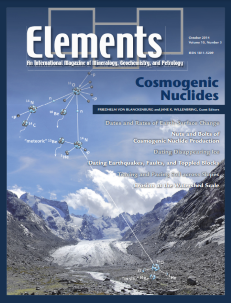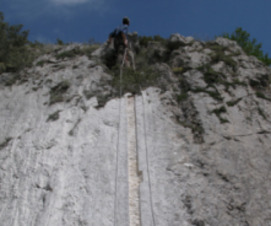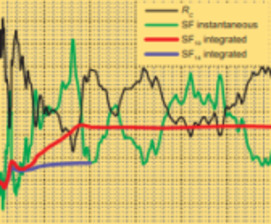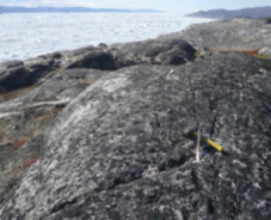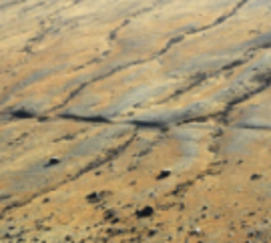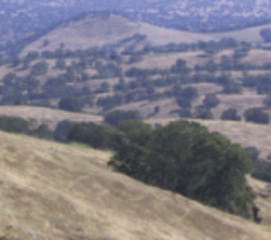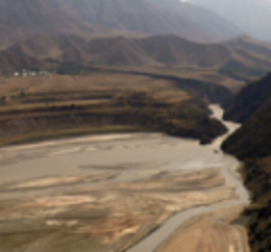
Cosmogenic Nuclides
Friedhelm on Blanckenburg and Jane K. Willenbring – Guest Editors
Table of Contents
The Earth’s surface is the thin, ever-changing layer on which we live. The geochemical study of cosmogenic nuclides is currently revolution- izing our understanding of the processes that shape this surface layer by providing their rates and dates. The underlying physical principles are simple and elegant: when rock or soil moves into the shallow zone of surface irradiation, cosmic rays interact with elements in minerals to produce very rare isotopes—the radioactive nuclides 10 Be, 14 C, 26 Al, 36 Cl, and 53 Mn and the rare gases 3 He and 21 Ne. At this exact moment, the nuclide clock begins to tick. These nuclides can reveal the times when a river cuts down through a mountain range, when a glacial moraine was deposited, or when a river or marine terrace was aban- doned. Cosmogenic nuclides also serve to measure erosion rates directly: the longer a soil resides at the surface before being eroded, the more nuclides accumulate. Hence, these nuclides provide rates of erosion, from the scale of a pebble to as large as an entire river basin.
- Cosmogenic Nuclides: Dates and Rates of Earth-Surface Change
- The Nuts and Bolts of Cosmogenic Nuclide Production
- Dating Disappearing Ice with Cosmogenic Nuclides
- Cosmogenic Nuclide Dating of Earthquakes, Faults, and Toppled Blocks
- Tracing and Pacing Soil Across Slopes
- Cosmogenic Nuclides and Erosion at the Watershed Scale
AHF Analysentechnik
Australian Scientific Instruments (ASI)
Bruker Nano
Cambridge University Press
Cameca
Elementa
FEI
Excalibur Mineral Corporation
Geochemist’s Workbench
JEOL
Nu Instruments
Savillex
Zeiss
v10n6 GRAPHITIC CARBONS
Guest Editors: Olivier Beyssac (CNRS and Université Pierre et Marie Curie, Paris) and Douglas Rumble (Carnegie Institution of Washington)
In natural systems, graphitic carbons are widespread and exhibit an infinite range of structure, from amorphous-like compounds (e.g. soots, charcoal) to crystalline graphite through a myriad of turbostratic struc- tures (e.g. coals, kerogens). A variety of structures and chemistries down to the nanometer scale control the physicochemical properties of gra- phitic carbons and determine their behavior and fate during geological processes. This issue of Elements will present recent advances in our understanding of the formation of graphitic carbons (graphitization, fluid deposition) and will discuss their role as actors and/or tracers in cosmochemistry, geobiology, geochemistry, and petrology. In particular, graphitic carbons may carry an important biological legacy in rocks, they may be used for assessing the thermal history of rocks, and they buffer the chemical composition of fluids in equilibrium with rocks. The issue will also present an introduction to the new carbon nanomaterials (e.g. graphene, carbon nanotubes), which bear structural similarities to natural graphitic carbons, and to their technological applications.
- Graphitic Carbon: A Ubiquitous, Diverse, and Useful Geomaterial Olivier Beyssac (UPMC Paris) and Douglas Rumble (Carnegie Institution of Washington)
- From Organic Matter to Graphite: Graphitization Olivier Beyssac (UPMC Paris) and Peter R. Buseck (Arizona State University)
- Hydrothermal Graphitic Carbon Douglas Rumble (Carnegie Institution of Washington)
- Graphitic Carbons and Biosignatures Sylvain Bernard (Museum National d’Histoire Naturelle, Paris) and Dominic Papineau (University College London)
- Presolar Graphitic Carbon Spherules: Rocks from Stars T. Kevin Croat, Thomas J. Bernatowicz, and Tyrone L. Daulton (Washington University in St Louis)
- Carbon-Based Nanoscience Michele Lazzeri (UPMC Paris) and Amelia Barreiro Megino (Columbia University)
- Asteroids: Linking Meteorites and Planets (February 2014)
- Ophiolites (April 2014)
- Kaolin (June 2014)
- Unconventional Hydrocarbons (August 2014)
- Cosmogenic Nuclides (October 2014)
- Graphitic Carbon (December 2014)
Download 2015 Thematic Preview


